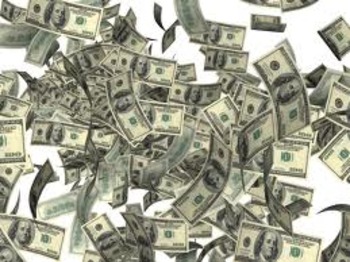To arrive at a fairly objective answer to this question, one would do well to analyze the subject from the perspective of a Ghanaian taxpayer whose FA intends to spend as much as $8 million at the next Africa Cup of Nations, whose monetary rewards are just a fraction – a mere fourth – of that amount.
It is not difficult to understand why the Ghana Football Association and the whole nation by extension appear so determined, even desperate, to see the Black Stars triumph at the upcoming Africa Cup of Nations. The west African nation last won the competition in 1982. Yes. It has been that long. Really painful and agonizingly long and fraught with some near-misses and heartbreaks since that fourth conquest.
Nevertheless, that wait – and all it entails – simply fails to justify the sheer monstrosity and enormity of the amount Ghana plans to inject into the next tournament. Eight million dollars is too gross and bloated a figure considering what shall be earned in return, even should the Black Stars eventually go all the way. An input of that much for a maximum, hardly guaranteed return of $2 million equates to a loss of considerable proportions in any business, not least in one as big as football, and on a country as economically fragile as our own, the implications could not be overstated.
Besides, it is not as if there is any logical correlation between sums invested and the level of success it yields. Zambia, winners from the last competition, spent nearly $8 m less than the Ivory Coast who emerged losing finalists. Put simply, the Nations Cup – much like all other Caf-sanctioned competition these days – is hardly worth all the fuss, from a purely economic viewpoint as from a moral one. This reality is placed into starker perspective when compared to the prizes on offer for the winners of continental competitions elsewhere. Uefa, for instance, gifted the champions of the last edition of the Euros – Spain in 2012 – a whopping $33.75 m (approximately 22.51 times Caf’s current price, and a full $3.76 m more than what the Spanish themselves received from Fifa for conquering the world back in 2010) as just about sufficient reward for tiki-taka-ing their way to continental glory.
Oh yes, that is what Michel Platini’s Europe is doling out to its best side, yet before it occurs to you to point out the admittedly varying depths of resources available to the former and Issa Hayatou’s Caf as an excuse for the vast disparities in the quoted figures, do well to consider just how much – and how more – other confederations more or less at par in strength, financially or otherwise, with African football’s governing body, are putting on the table.
Uruguay, winners of the most recent Copa America took home $7 m; champions of CONCACAF from the Gold Cup of 2009, Mexico, were awarded a monetary package of $17 m to go with the trophy they won, with Grenada, the team that officially turned in the worst performance receiving a cool $1.4 m for their troubles – just a hundred thousand bucks less than Zambia got for being crowned Africa’s finest earlier this year. And even with that, Caf somehow failed to afford paying off that paltry sum at the competition’s end, with the victorious Chipolopolo eventually receiving their fee in two installments of $600,000 each.
The remainder of $300,000 was yet unpaid the last time I checked, which was back in July, some five months after the tournament ended! In fact, the individual members of that Zambian team received some $50, 500 more from their own government than they did from Caf for their achievement. Why, even Caf (with the ‘A’ for Asian), which until now had refrained from giving out financial rewards to its continental champs, has budgeted $10 m to be shared among the winners and the runners-up at the 2015 Asian Cup for starters! The conclusion? Obviously, Africa’s Caf could certainly do far better than they presently are, and they are probably well-conscious of that fact themselves.
Nevertheless, it is not as if they cannot afford to improve on these unacceptably low standards; and well, even if they truly could not, that matter is left very much to public conjecture, for as long as Caf continues with its mystifying habit of keeping its financial details murky and shrouded. Really, though, there is little reason to doubt if Caf could not cough up a handful of dollars more if they dug a little deeper into their bulging coffers.
The Afcon certainly has its fair share of sponsors – it is headlined by Orange, an international France-based telecommunications group, for instance, with the likes of Samsung, Nasuba Express, Standard Bank, and Pepsi – all reasonably lucrative businesses, no doubt – on board, too. Strangely, though, nobody seems to complain; not the quasi-autocratic hierarchy in Cairo, nor the insufficiently remunerated member associations themselves, the latter probably being the case because the players on the various participating teams and their numerous tag-alongs are more than adequately catered for by their respective national budgets, leaving the countries themselves and their soccer-crazy citizens as the only true ‘victims’ in all of this.
Thus, for much of the foreseeable future, the CAN would only thrive on the sheer romance and charm – the excitement, nationalism and entertainment- it generates across the continent. But then, well, even the strongest romances and the most potent spells do tend to wear off when not sufficiently nourished and sustained. Oh, do they not, Monsieur Hayatou?
Source: Goal.com



Leave a Reply